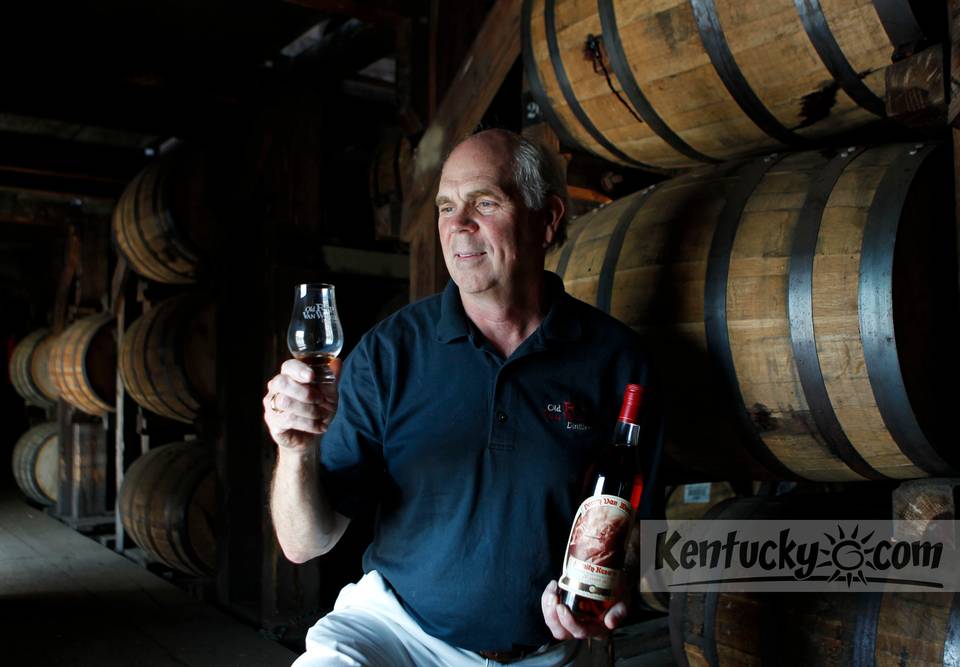Pappy Van Winkle has been on the brain this past week and I realized that it might be a good idea to be clear about what is actually in those very sought after bottles.
I’ve written about Julian Van Winkle Sr. in recent blog posts. He was the man behind Stitzel-Weller and the establishment of that distillery. He made Old Fitzgerald bourbon and his son maintained the Old Rip Van Winkle brand copyright after the distillery closed its doors in the 70’s. United Distillers, which later became Diageo, became owners of Stitzel-Weller, but Julian Van Winkle Jr. maintained access to old stocks from the warehouses. He (“Pappy’s” son) began bottling those products under the Old Rip Van Winkle label. In 1981, Julian Van Winkle III became owner of the family company during a very difficult time for bourbon producers.
Bourbon was not a big seller in the 80’s. The American marketplace was opening up to lighter spirits like vodka and gin. High end brown spirit sales were going to scotch whisky producers. By the early nineties, The Van Winkles were selling younger sourced products from Heaven Hill to foreign markets (the Japanese market mostly) under many different labels to stay afloat. Julian Van Winkle III was selling older bourbons from their Stitzel-Weller stocks as well, but they weren’t recognized by the bourbon drinking public until the late 90’s.
The Pappy Van Winkle label was not launched until the mid-nineties. In 1998, the Beverage Tasting Institute, which hosts blind-tasting competitions for wines and spirits, awarded the 20-year Family Reserve a score of 99 out of 100. No one seems to want to be clear about the fact that the particular bottle of Pappy Van Winkle that won that award was actually a rye flavored bourbon that Julian Van Winkle sourced from Old Boone stocks. The story goes that a distributor from Chicago entered that bottle into competition without Julian’s knowledge. As the barrels of Old Boone wore out, they switched to the wheated Stitzel-Weller stocks (most likely Old Fitzgerald barrels). The wheated version that became the 23 year old was also scored a 99. (1998 was the year Pappy Van Winkle switched to clear bottles.) Dating Pappy Van Winkle bottle scan be difficult because they did not begin time-stamping bottles until 2006-2007.
Julian Van Winkle III and his son Preston are the current Van Winkles that run the business. Preston came into the business in 2001. They may not be surprised by the industry wide growth that their brands have gained, but they were caught off guard by it. There just simply isn’t enough of it to go around. That is because the Van Winkles are not distillers, but producers. The labels may say, “bottled by Old Rip Van Winkle Distillery, Lawrenceburg, Kentucky,” but the juice inside was sourced from “other distilleries. It is common knowledge that Pappy Van Winkle is currently distilled by Buffalo Trace Distillery. The Van Winkle’s struck a joint venture with Buffalo Trace in 2002 to distill their whiskey.
That being said, since 2012, the 10 year old Van Winkle became entirely Buffalo Trace juice. Because no one could say it better than Bourbon Hall of Fame journalist Chuck Cowdery, so I’ll quote him from June 2012-
“The Van Winkle Family Reserve Rye has long been a 50/50 combination of Medley (Owensboro) and Cream of Kentucky (old Bernheim in Louisville) rye whiskey. The whiskey was all dumped into stainless steel tanks years ago. Each fall, some of it is withdrawn and bottled.
This fall’s Old Rip Van Winkle 10 year old will be wheated bourbon made entirely at the Buffalo Trace Distillery in Frankfort.
Van Winkle Family Reserve 12 year old (‘Lot B’) will be a mixture of wheated bourbons made at the Buffalo Trace Distillery in Frankfort and the Bernheim Distillery in Louisville.
Pappy Van Winkle 15 year old will be a mixture of wheated bourbons made at Buffalo Trace, Bernheim, and Stitzel-Weller; every bottle will contain some whiskey from each distillery.
Pappy Van Winkle 20 year old and Pappy Van Winkle 23 year old will be a mixture of wheated bourbons made at Buffalo Trace and Stitzel-Weller.
Eventually, as current stocks are depleted, everything will become Buffalo Trace.”
–Chuck Cowdery
The new Van Winkle bourbons are aged W.L.Weller products. Sazerac purchased the W.L.Weller brand in 1999, the same year that they purchased the Buffalo Trace distillery. W.L.Weller wasn’t produced in earnest until 2002, the same year that they struck the contract with the Van Winkles.
None of this information is given to belittle the bourbons or the legacy of the Van Winkle family- Quite the opposite, in fact. To maintain quality of product over three generations is a feat worthy of praise. In all honesty, the Van Winkles, after decades of maintaining a family brand name, have succeeded in living up to their patriarch’s motto- “We make fine bourbon. At a profit if we can, at a loss if we must, but always fine bourbon.” In the past, Julian Van Winkle has had to choose from limited stocks and now has access to some of the best bourbon that Kentucky has to offer yet again. It seems the family has the “Midas touch.” The number of bottles released is still very limited and they have explained this by saying that the bourbon market is fickle and there is no way of knowing where it will place its affections next. Think about it. Pappy Van Winkle products became the darling of the bourbon world in just a few years. “Easy come, easy go” may be a saying, but it can just as easily become a reality if Pappy Van Winkle loses its luster. They’ve been around long enough to know that maintaining excellent product should always be a priority. If only the retailers would behave themselves and stop gouging the consumer…

